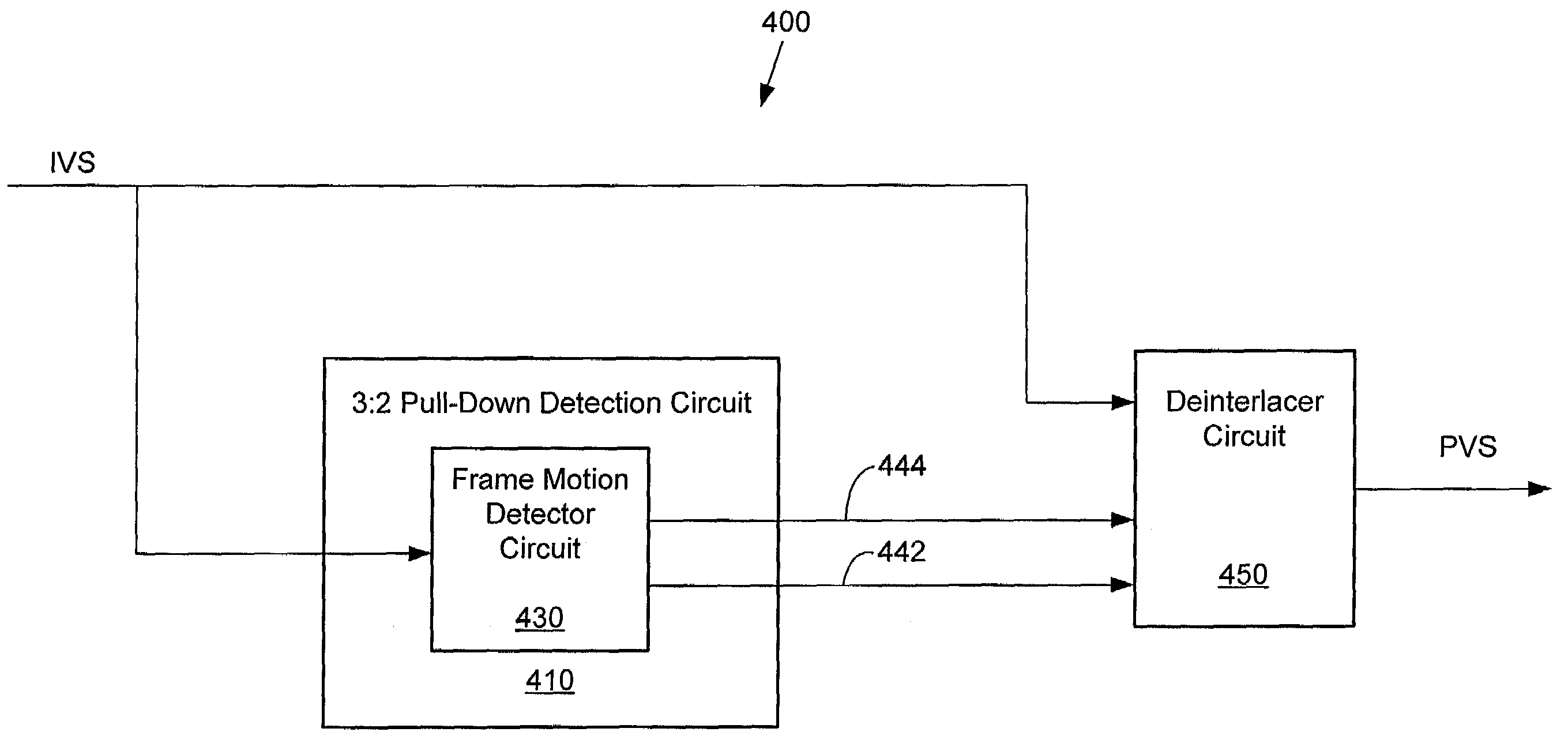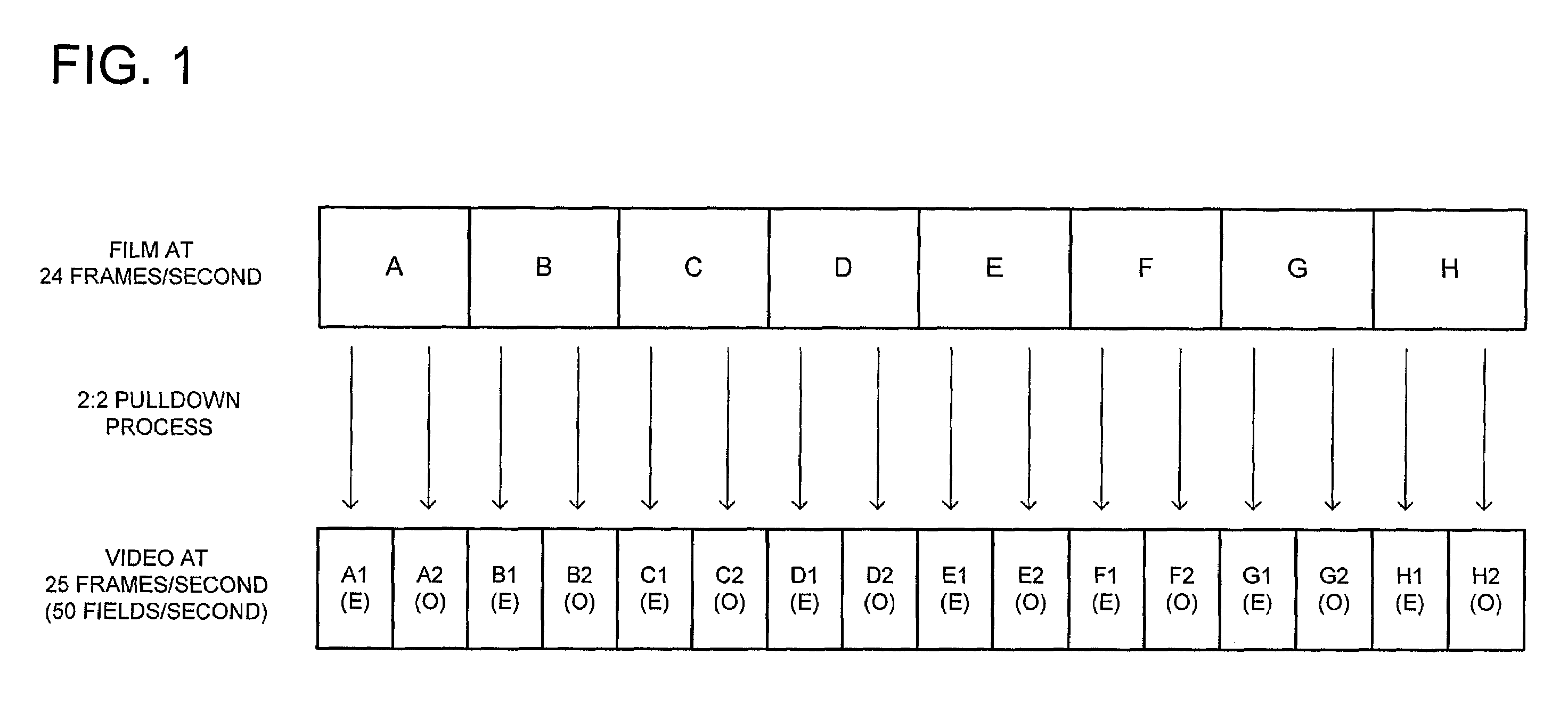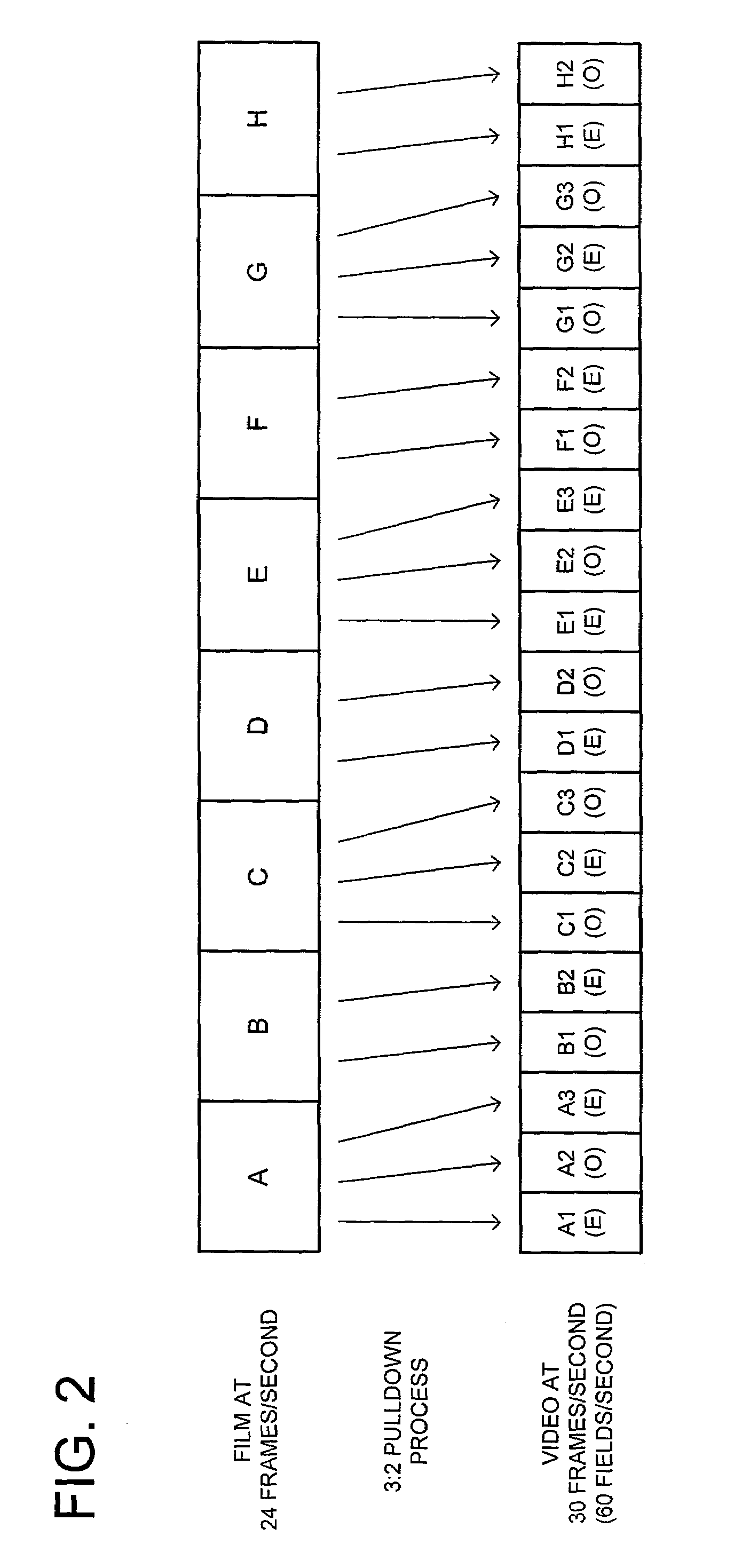2:2 and 3:2 pull-down detection techniques
a detection technique and pull-down field technology, applied in the field of video signal processing, can solve the problems of generating a clearly visible loss of vertical resolution for relatively static images, prone to false detection of 2:2 pull-down field patterns, and high objectionable artifacts
- Summary
- Abstract
- Description
- Claims
- Application Information
AI Technical Summary
Benefits of technology
Problems solved by technology
Method used
Image
Examples
Embodiment Construction
[0110]Certain embodiments of the present invention and their advantages are best understood by referring to the drawings. Like reference numerals are used for like and corresponding parts of the various drawings.
I. Video Deinterlacer System With Improved 2:2 Pull-Down Detection
[0111]FIG. 3 is a block diagram of a video deinterlacer system 300, according to some embodiments of the present invention. Video deinterlacer system 300 includes a 2:2 pull-down detection circuit 310 and a deinterlacer circuit 350. 2:2 pull-down detection circuit 310 includes a field motion detector circuit 320, a frame motion detector circuit 330, and a control circuit 340. The functions performed by video deinterlacer system 300 can be implemented using hardware, firmware / microcode, software, or any combination thereof. Video deinterlacer system 300 can also be implemented on a single integrated circuit device or on multiple integrated circuit devices.
[0112]2:2 pull-down field motion detector circuit 320, w...
PUM
 Login to View More
Login to View More Abstract
Description
Claims
Application Information
 Login to View More
Login to View More - R&D
- Intellectual Property
- Life Sciences
- Materials
- Tech Scout
- Unparalleled Data Quality
- Higher Quality Content
- 60% Fewer Hallucinations
Browse by: Latest US Patents, China's latest patents, Technical Efficacy Thesaurus, Application Domain, Technology Topic, Popular Technical Reports.
© 2025 PatSnap. All rights reserved.Legal|Privacy policy|Modern Slavery Act Transparency Statement|Sitemap|About US| Contact US: help@patsnap.com



